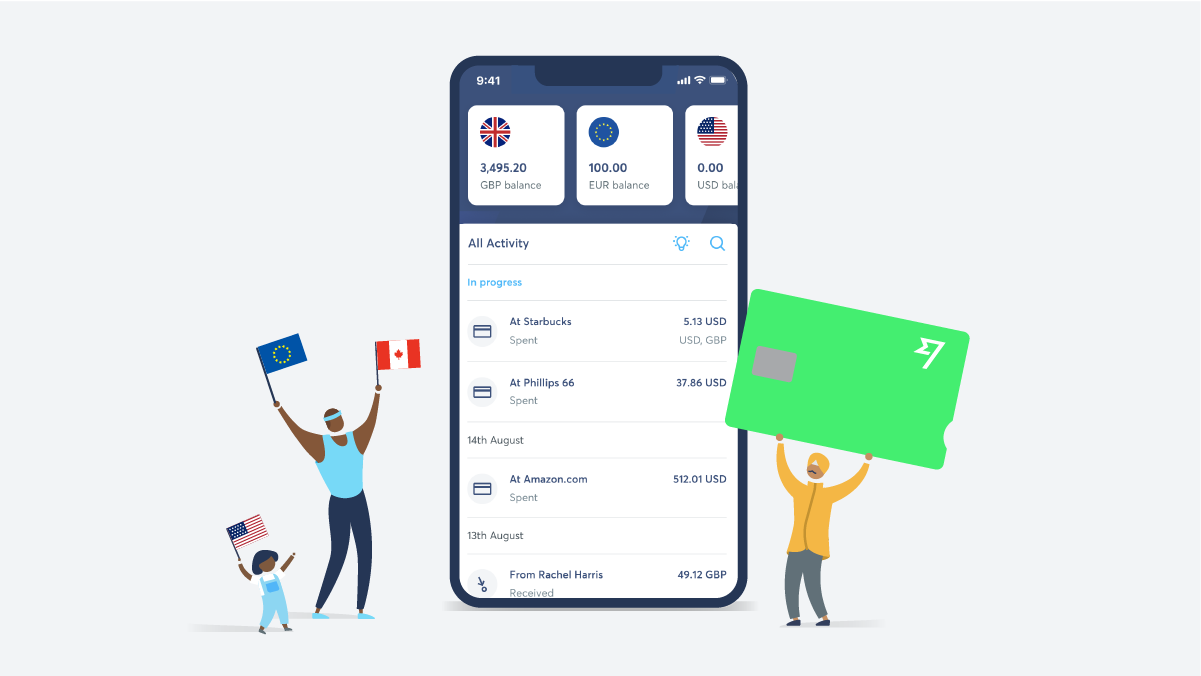How to control FX risk as you scale your startup
International expansion, trade and investment are now an inevitable part of doing business for any ambitious startup. But with any international transaction...

If your business needs to send money or pay suppliers overseas, one of the payment methods you may come across is telegraphic transfer. Also known as a t/t payment, this is a commonly accepted payment method by suppliers in countries like China.
In this guide, we’ll give you the lowdown on telegraphic transfers, starting with how they work and which banking systems you can use as a UK-based business. Plus, how much t/t payments cost, how long they take and how to set one up with your bank.
We’ll also take a quick look at money-saving alternative, such as Wise Business account to send money worldwide cheaper and currency conversion at the mid-market rate.
But first, let’s define what a telegraphic transfer is.
In a nutshell, a telegraphic transfer is an electronic money transfer, usually used for making international payments.
The term is a little outdated in many countries now, as it dates back to when money was moved around the world using the telegraph, telephone and radio. However, some countries still use it. These days, you’re likely to know a t/t payment simply as a bank transfer or a wire transfer.
In the UK, the Clearing House Automated Payment System (CHAPS) is used for same-day or high-value transfers within the country.
SWIFT is what most banks use for international payments. This stands for Society for Worldwide Interbank Financial Telecommunications. It’s a network of banks across the world, through which your payment will travel until it reaches its destination.
However, SWIFT is often slow and costly. If you want to whizz money overseas quickly, you can use services like Wise International - it's cheaper than the traditional SWIFT system with banks.
Both CHAPS and SWIFT are considered to be forms of telegraphic transfer, but a BACS payment is not. There’s also the SEPA (Single Euro Payments Area) system, designed for cross-border electronic payments within Europe.
The time a wire transfer typically takes depends on your bank, and whether you’re using the CHAPS or SWIFT system.
Local CHAPS payments can arrive at their destination instantly, or within a couple of hours¹.
SWIFT payments can take longer, although it depends where you’re sending the payment from or to. The more banks are involved along the way, the longer it can take. All in all, you can expect SWIFT payments to take at least 2-5 days¹.
The cost of sending a telegraphic transfer again depends on your bank, and whether you use CHAPS or SWIFT.
The average bank fee for t/t payments using CHAPS is between £25 and £35¹, although some banks don’t charge a fee for this service so what you should look out for is the conversion rate due to the mark-up most banks add on their exchange rate - one of the things Wise International could save you money on.
The fee for SWIFT payments can vary considerably depending on which country you’re sending the payment to. If the payment has to go through many different banks along the SWIFT network, each may charge their own separate fee. This can make SWIFT payments very expensive indeed.
Ready to send your first telegraphic transfer? Here’s what you need to do:

If you have an overseas supplier and you’re thinking of paying them by t/t payment, hold fire just for a moment. You could pay a small fortune in fees and currency conversion charges if you set up a SWIFT payment with your bank. Plus, you could lose money to unfavourable exchange rates and the payment could take days to arrive.
Here’s a cheaper alternative. Open a Wise Business account and you can pay suppliers all over the world for low, transparent fees, and the real, mid-market exchange rate. There are no mark-ups on the exchange rate, and no middle-man banks adding their own fees on top.
As well as saving you money, Wise is quick, convenient and secure. It could take up to 2 working days for your payment to arrive, but it’s very rare that it even takes this long¹. Plus, Wise is fully regulated and uses sophisticated security methods to protect your money. So, all you have to do is enter your details and the amount, check the fee and exchange rate and hit ‘send’. It’s that easy.
So, that’s pretty much everything you need to know about telegraphic transfers. We’ve covered how they work, including the differences between CHAPS and SWIFT, how much they cost and how long they take.
Even if the term isn’t widely used in some countries anymore, it’s still a good idea to know about t/t payments if your business deals with overseas suppliers. And of course, about cheaper, quicker alternatives such as Wise.
Sources used for this article:
Sources checked on 19-May-2021.
*Please see terms of use and product availability for your region or visit Wise fees and pricing for the most up to date pricing and fee information.
This publication is provided for general information purposes and does not constitute legal, tax or other professional advice from Wise Payments Limited or its subsidiaries and its affiliates, and it is not intended as a substitute for obtaining advice from a financial advisor or any other professional.
We make no representations, warranties or guarantees, whether expressed or implied, that the content in the publication is accurate, complete or up to date.

International expansion, trade and investment are now an inevitable part of doing business for any ambitious startup. But with any international transaction...

Get insights on the best SRM for startups to optimize customer relationship and drive growth.

Discover the best 0 interest business credit card you can get in the UK to help you manage cash flow and business spending.

Can you use Airwallex in the US? Find out here in our essential guide for UK businesses, covering everything you need to know.

A business that needs access to working capital should consider debt factoring advantages and disadvantages before making a decision.

Discover the best startup business credit cards to improve cash flow and streamline financial management.